Description of the system. Innovation in transport industry
- normal - public transport vehicles move according to the classic scheme and stop at stopping points at the platforms, each in their own direction of movement:

- heavy - vehicle traffic is organized by groups with stops at stopping points near both platforms in the same direction of movement. Moreover, vehicles follow one track one after the other (before the stopping point, one of them moves on the oncoming path), and parallel along two tracks, one next to the other.
At the same time:
- at intersections with non-intensive cross-traffic, oncoming pairs of trams passed without creating significant obstacles to other transport due to its small number;
- at intersections with heavy cross traffic, trams move in pairs along both tracks, occupying a minimum of space and due to this also creating no obstacles to traffic flow.
Such traffic control can be applied both everywhere and constantly, as well as on certain routes or only during the hours of the largest passenger traffic:

In an intensive mode of movement, two-way operation of the platforms of stopping points is provided, in which from the same platform the possibility of boarding and disembarking passengers from both en-route and oncoming trams is implemented, thus groups of trams of different directions arrive at the stopping point alternately, ensuring its operation in "reverse mode." This is convenient for passengers since, regardless of which direction they need to follow, they have the ability to board the car from any platform.
For the rest of the time or in low-load areas, known and widely used control schemes can be used, in which single or coupled vehicles follow at scheduled intervals without being removed to opposite tracks.
Performance of platforms in two-way mode. Transportation and innovation
For example, during rush hours, when traffic is organized in groups, the platforms operate in a two-way mode, which is informed by a text or character indication in the form of an inscription or arrow pointing in both directions, or in another understandable way. At other times, such an indication displays information that the platforms are operating in a one-way mode, for example, in the form of an arrow pointing in the corresponding direction of movement.
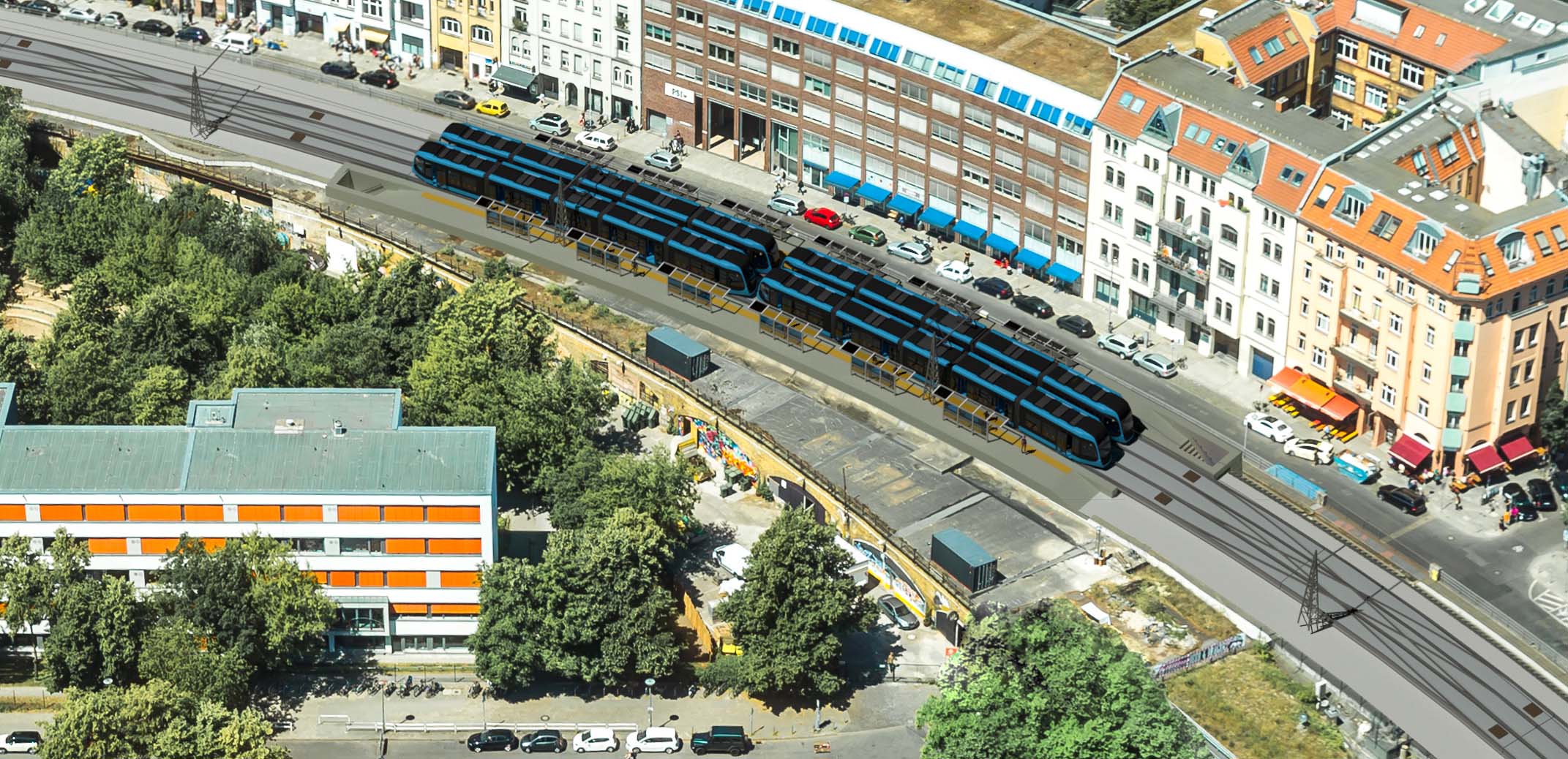
For uniform distribution of passengers between cars of one group, platform of stopping points and the vehicles themselves are equipped with mutually agreed counting systems for recognition of number of passengers, at the same time ensuring arrival of the group least loaded by passengers of the car to the platform crowded by passengers. This ensures a uniform, rational and comfortable transportation of passengers, eliminating the movement of empty and overloaded wagons.
Feature of parallel motion
A significant advantage of parallel train traffic is a 2 times increase in the maximum number of passengers carried with a minimum impact on the road situation. Even when the intervals between groups of trains increase compared to the usual intervals, increased carrying capacity remains. This is realized due to the fact that the length of a group of two parallel moving vehicles approaches the length of one train compared to the classical traffic scheme. This allows to achieve the same or even lower congestion rates in the event of an increase in the intervals of train groups at intersections. At the same time, the number of simultaneously transported passengers increases by 2 times.

The three diagrams below give an example of the implementation of the junction of oncoming groups of trams. Two separate trams No. 1 and No. 2 of each group A and B move parallel to each other in one direction: one train travels along one track and the second along another track. When such oncoming groups A and B approach, they are passed due to the moving of each group to their own track within the nearest stop: the second tram of each pair moves out of its way by rail and moves sequentially after the first.


Thus, the pairs of trams A and B pass each other in the interval between the stations each along their own traffic track, and after the junction the second numbers in the pairs are again move to the opposite track on the nearest railway turnout and then the trams of each group are parallel to each other again and each group is in its own direction.

Features of the movement to the oncoming track
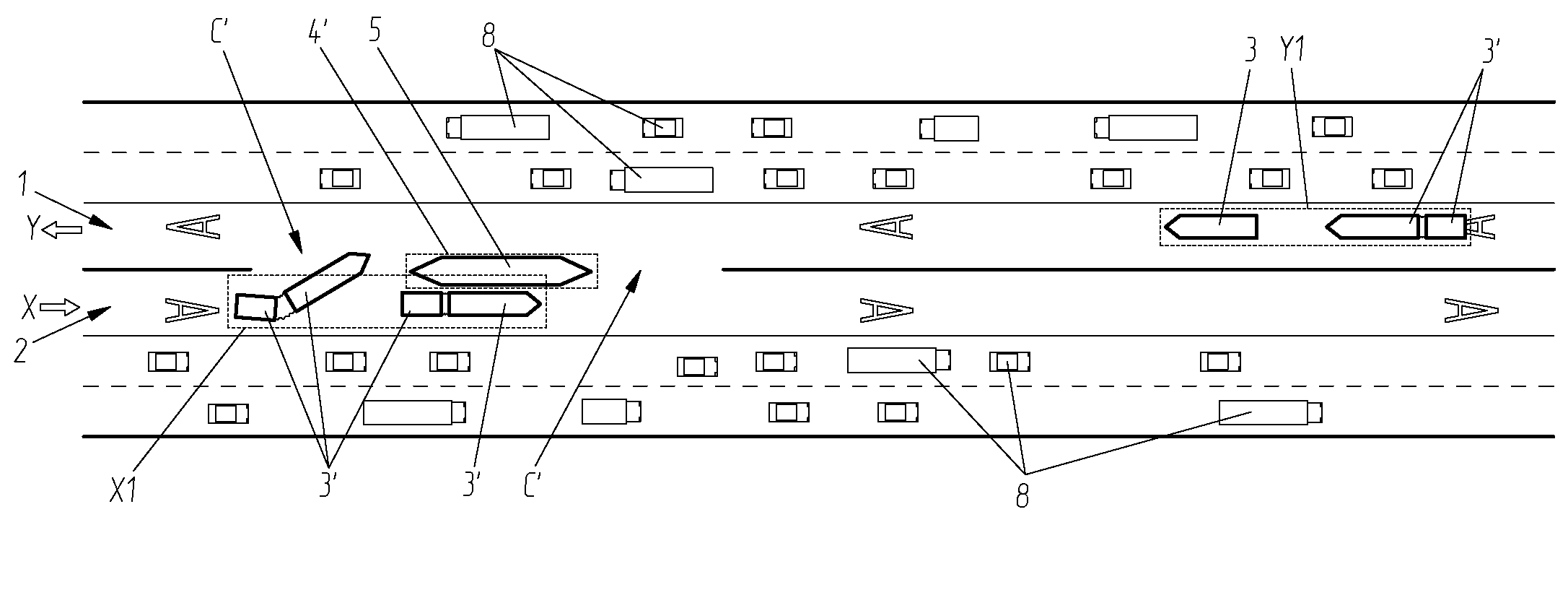
At the same time, in the case of organizing the movement of rail transport, standard turnout are used, accordingly, the construction of additional bypass tracks (pockets) is not required to enter the cars to the back of the platforms, which causes a decrease in runway capability, and on narrow streets of settlements makes such a reconstruction impossible.

Infrastructure
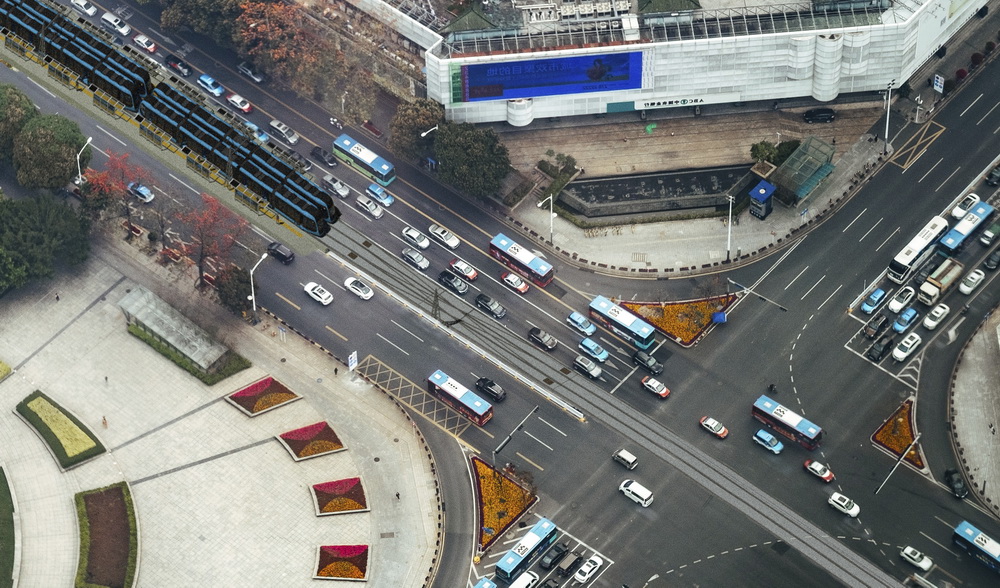
Such tracks, that is, lanes allocated for off-track transport in both directions, are planned adjacent to each other, allowing for the restructuring of these mergers, for example, some vehicles from their way to the opposite track and vice versa. In the case of rail transport, the implementation of the reconstruction of its movement is even easier than for rail-less, because the same trains are used as in the usual ways of organizing traffic (equipped with doors on both sides), and in the case of off-track transport, it should be taken into account that vehicles should also be equipped with doors on both sides, but the solution may be to use some cars in groups of rail-free transport equipped with doors on the right side (for example, designed for right-hand traffic), and some cars - equipped with doors on the left side (for example, designed for left-hand traffic).
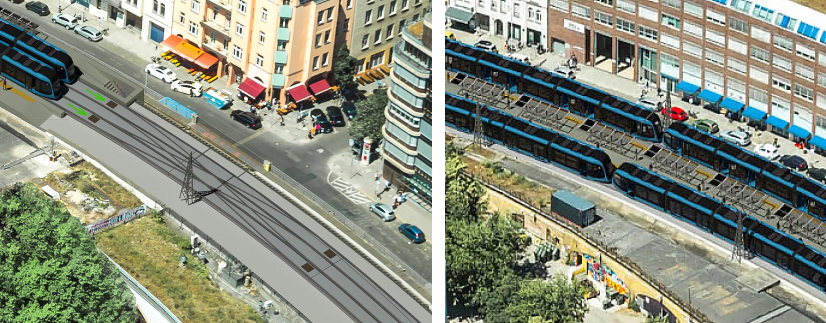
Automation
During traffic in the sections between stopping points, when approaching the points of intersection with the routes of other participants in the movement for a group of vehicles, a traffic light enabling signal is turned on in advance. This happens automatically when approaching the intersection of the first car of each group, i.e. providing a green wave mode for non-stop intersection of intersections by this group of trams with their advantage over other road users. Moreover, if the distance between such intersections is small, then the enabling signal can be turned on simultaneously at several following intersections.
Safety
Cars of each group are equipped with matching devices ensuring their movement in each group in order to regulate the speed, acceleration, deceleration, braking and start of movement of one of the cars depending on the status of movement or parking of other vehicles of the same group. Due to the fact that the automation of auto-driving and remote control systems provides an effective and safe minimum distance between cars in each group, the total closing time of intersections on this route for other traffic participants is comparable to the classic traffic scheme, but at the same time, double the number of public transport vehicles is ensured through these intersections.
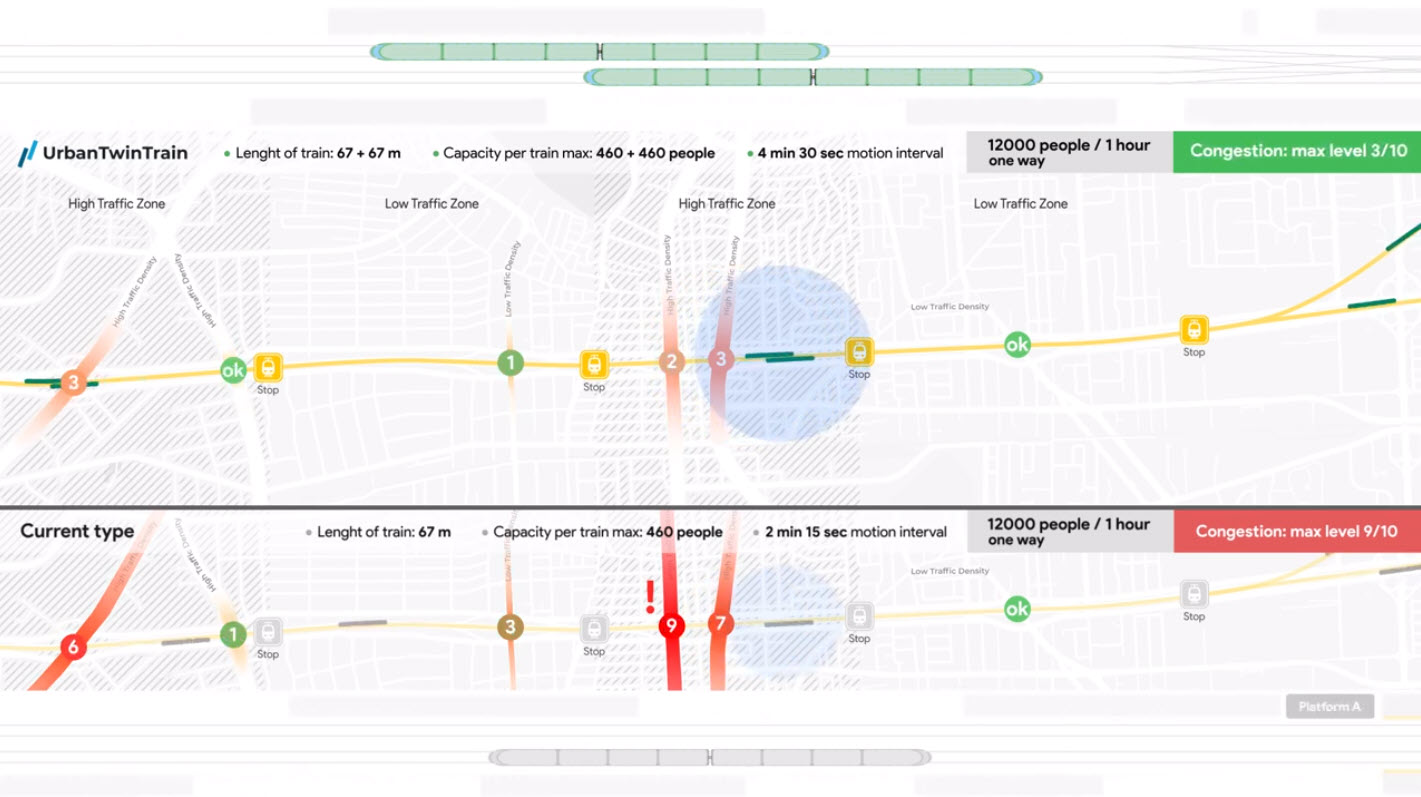
In the case of parallel movement of trains with an offset from each other, they provide traffic safety comparable to the traditional traffic pattern. The movement of trains in parallel traffic is necessary for the safe control of speed, acceleration, deceleration, braking and start of movement of some vehicles depending on the behavior of other vehicles of the same group.